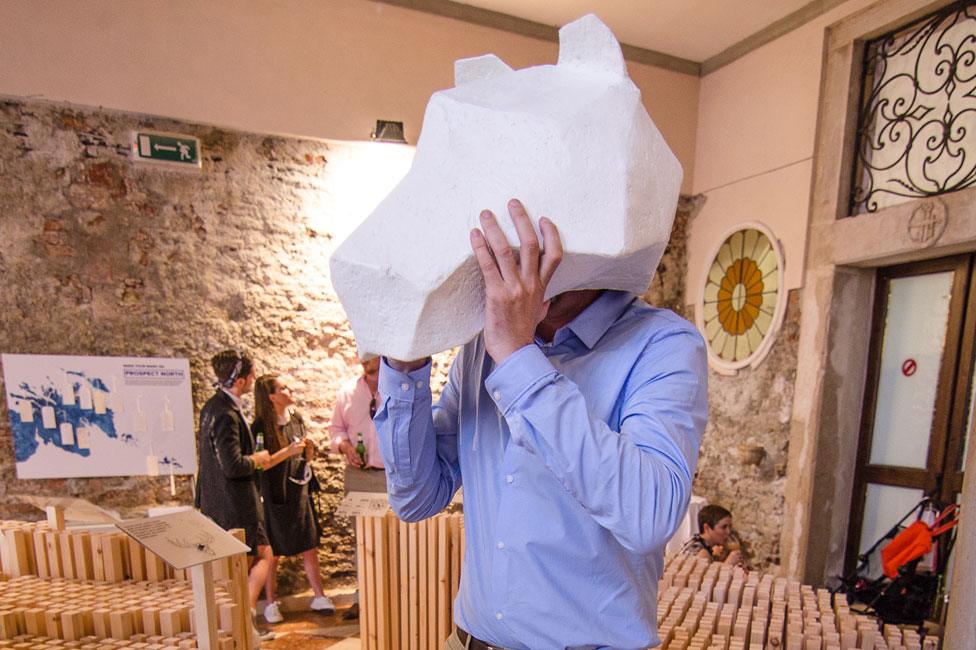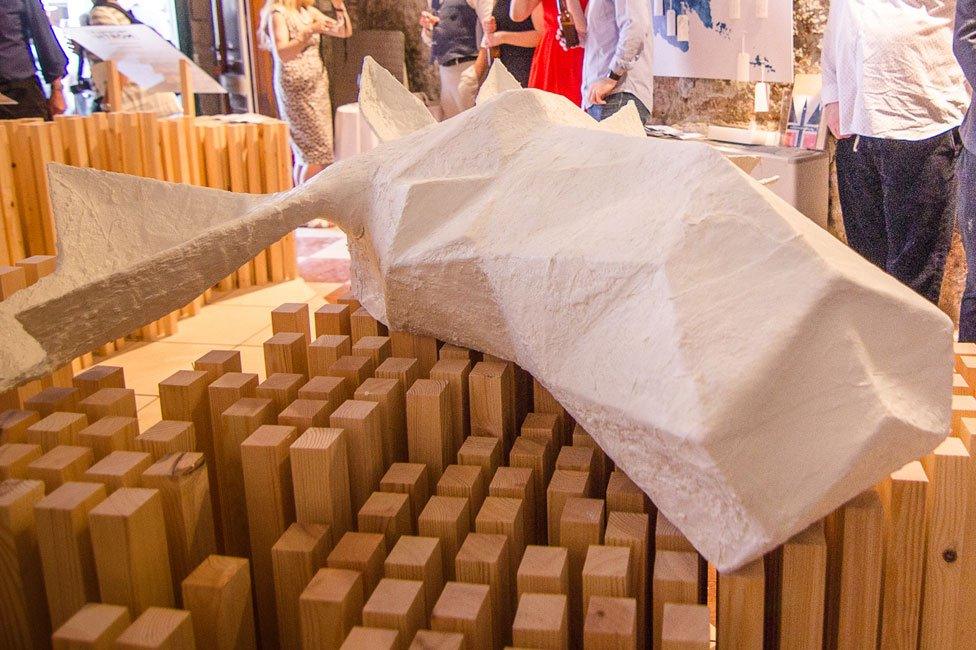Scottish scenes viewed in 3D at Venice architectural event
- Published

Virtual reality experiences of Scottish scenes could be viewed inside animal heads
A 3D, 360 degree visualisation of a village ruined in Scotland's Highland Clearances are being viewed by visitors to an architectural event in Italy.
The virtual reality experience of Boreraig on Skye involved using mobile phones fitted inside animal heads.
The visuals form part of Prospect North, an exhibition at the Venice International Architectural Biennale.
Dualchas Architects on Skye worked with Glasgow design organisations Lateral North and Soluis on the exhibition.
Other 3D visuals offered to visitors to the Scottish display include that of a contemporary design for a traditional Hebridean blackhouse, a futurist house and a map showing Scotland, Scandinavia and the Arctic.
The headwear used are in the shape of a polar bear and moose - two animals once native to Scotland - and a unicorn, Scotland's national animal.
Inside each head is Google Cardboard, a foldable unit made of cardboard to which mobile phones can fitted to give users 3D virtual reality (VR) experiences.
The Biennale runs until the end of November.

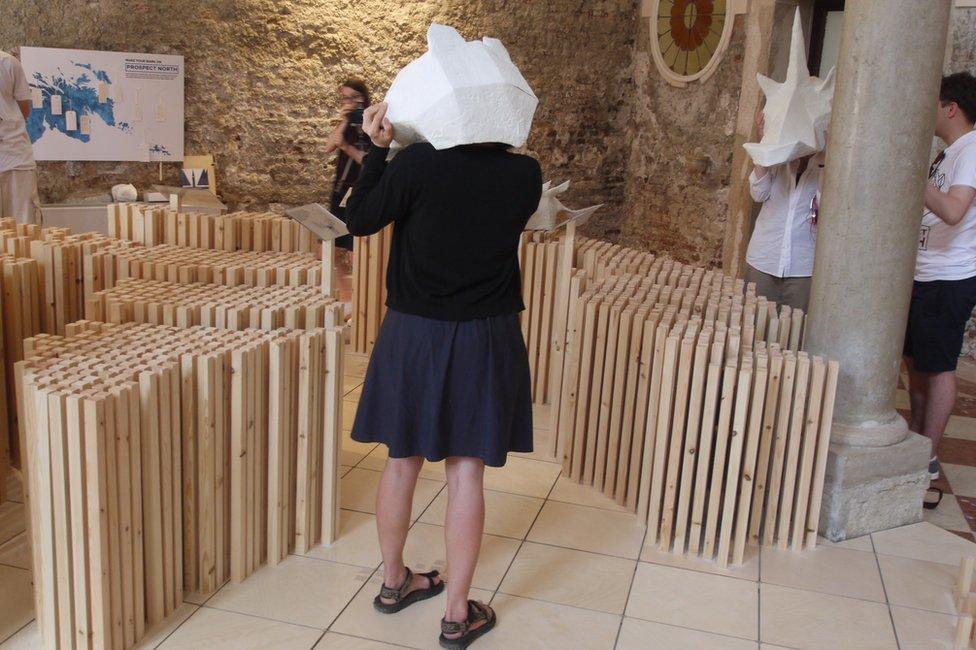
Neil Stephen, of Dualchas Architects, said Prospect North was intended to be eye-catching, but to also, through the visualisation of Boreraig, tell a serious story.
He said: "In this element we look at how the communities in the Highlands were destroyed, along with much of its Gaelic culture.
"We then look at how contemporary architecture is trying to connect with the past, but finding that it is largely a privilege of the wealthy as the young still leave, pushed out by high land values.
"We then imagine a different future where economic opportunities to the north can repopulate the Highlands."
'Invading architecture'
Fergus Bruce, of Soluis, said: "Augmented and virtual reality offered Prospect North the chance to deliver a mixture of technology and sculpture not previously seen at the Biennale, and offered Soluis the chance to push boundaries in using a complex, unique piece of art as a trigger for augmented reality - and, for the first time, to deliver VR experiences in animal heads.
"These technologies are currently disrupting and invading architecture and design, so the timing couldn't be more appropriate.
"Most of all, however, we hope this collaboration will help communicate and emphasise the extraordinary creative environment in Scotland - from the regeneration projects in our metropolitan centres, to the frontier communities Prospect North is about."
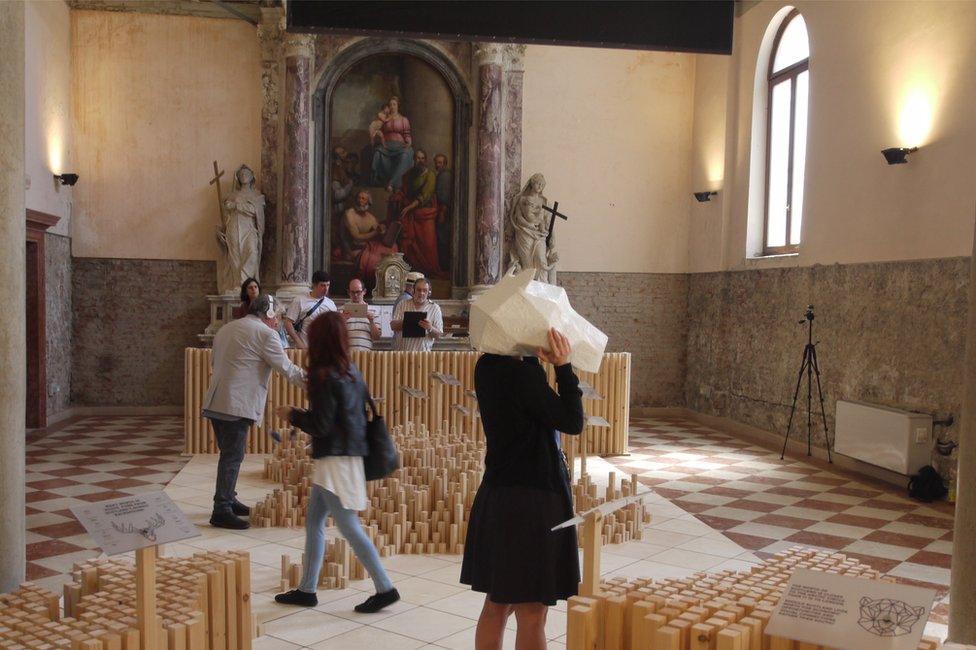
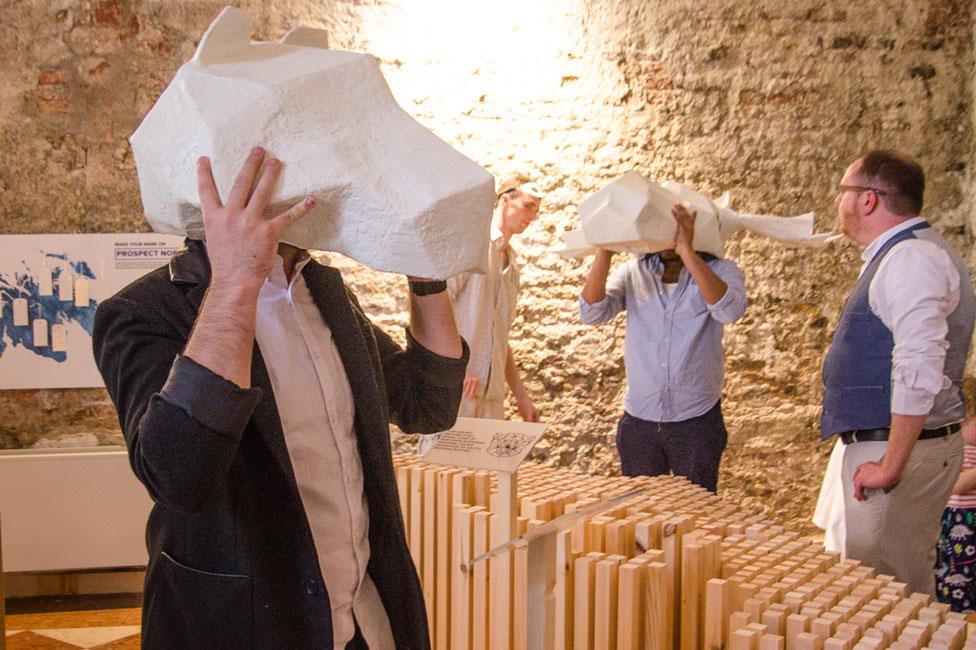
Boreraig was among communities in the Highlands and Islands affected by the Highland Clearances.
Starting in the late 18th Century and running into the 19th Century, the clearances saw townships occupied by generations of families cleared to make way for large-scale sheep farming and the rearing of deer.
Landowners were seeking to "improve" their estates in line with the industrial revolution. Their hope was to make more capital from the land by running shooting estates, or starting industrial-scale livestock farming.
In some cases people who had lived on the land for generations left voluntarily, while others were forcibly evicted and their homes burned and demolished.

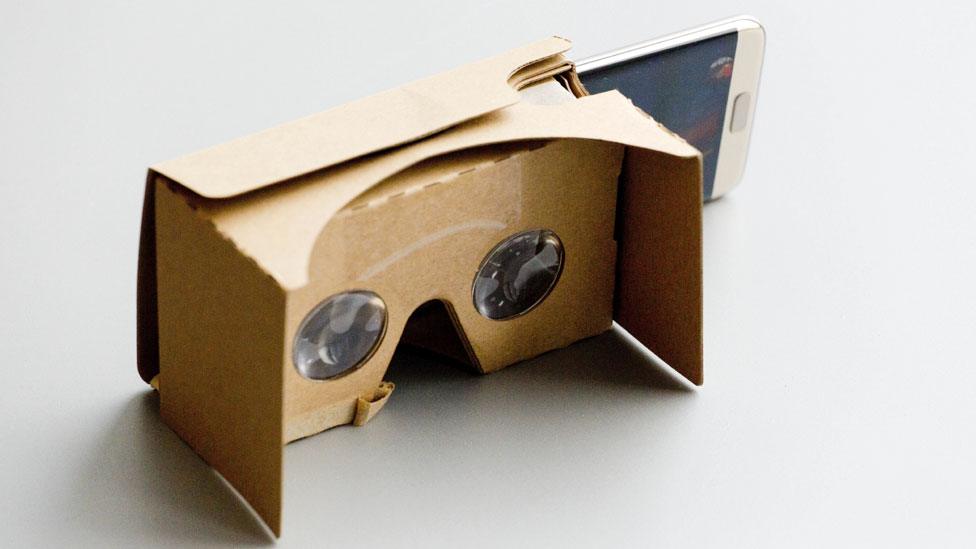
The animal heads have Google Cardboard units built into them
